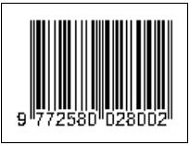VOCABULARY TEACHING STRATEGIES APPLIED ON LEARN ENGLISH WITH PAPA TEACH ME YOUTUBE CHANNEL
Downloads
Abstract: During COVID-19, some teaching strategies for vocabulary, as with other materials, cannot be re-adopted since the teaching activities have shifted to online. Language teachers started providing students with educational videos taken from YouTube to overcome this situation. Using technology, mainly YouTube, to learn English has persisted since the Covid-19 pandemic. Despite being a trend nowadays, vocabulary teaching strategies on videos for English learning on YouTube are relatively unexplored. Therefore, this study aims to investigate the vocabulary teaching strategies on Learn English with Papa Teach Me YouTube channel. This study adopted a qualitative approach. The data of this study were obtained from a playlist titled “English Vocabulary” on Learn English with Papa Teach Me. The data were analyzed using Harmer‟s (1991) vocabulary teaching strategies. The findings show that Learn English with Papa Teach Me applied five of seven vocabulary teaching strategies proposed by Harmer (1991), which are: (1) mime, action, and gesture; (2) picture; (3) explanation; (4) enumeration; and (5) translation. Three strategies that were most frequently used are mime, action, and gesture (59 times), picture (54 times), and explanation (51 times). Therefore, this study recommends the utilization of (1) mime, action, gesture, (2) picture, and (3) explanation strategies for teachers. Teachers can combine these strategies to catch students‟ attention, help them understand the vocabulary context, and enhance their memorization ability.
Keywords: educational videos, online teaching, vocabulary teaching strategies

This work is licensed under a Creative Commons Attribution-NonCommercial-ShareAlike 4.0 International License.
1. Copyright of this journal is possession of Editorial Board and Journal Manager, by the knowledge of author, whilst the moral right of the publication belongs to the author.
2. Legal formal aspect of journal publication accessibility refers to Creative Commons Atribusi-Non Commercial-ShareAlike (CC BY-NC-SA),implies that publication can be used for non-commercial purposes in its original form.
3. Every publications (printed/electronic) are open access for educational purposes, research, and library. Other that the aims mentioned above, editorial board is not responsible for copyright violation.










